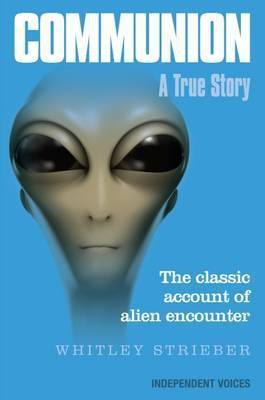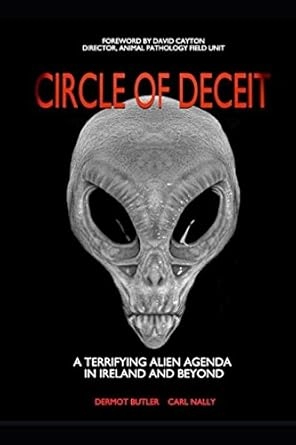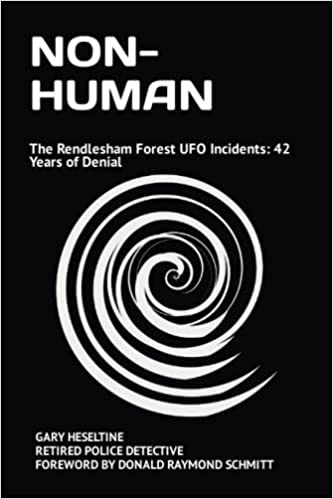Celebrating Carl Sagan at 90: A Legacy in Science, Communication, and Advocacy
Science/Medical/Technology
Sunday 10th, November 2024
5 minute read.
The 9th of November 2024, the world marked what would have been the 90th birthday of Carl Sagan, the renowned scientist, author, and science communicator who passed away in 1996 at the age of 62.
Most remember Sagan as the co-creator and host of the 1980 television series Cosmos, which captivated hundreds of millions worldwide. Others discovered his writing through Contact, his best selling science fiction novel, or The Dragons of Eden, his Pulitzer Prize winning nonfiction book. Many were introduced to his ideas during his appearances on The Tonight Show, where he popularised astronomy for mainstream audiences. However, beyond his fame and media presence, Sagan’s scientific contributions had a profound and lasting impact.
Sagan’s scientific output includes more than 600 research papers, leading to insights that resonate today and inspiring generations of scientists. His achievements spanned multiple disciplines, from planetary science and climate studies to astrobiology and the search for extraterrestrial life. As a planetary astronomer, Sagan’s depth and breadth of expertise were unusual, crossing fields from astronomy and chemistry to physics and biology. His commitment to scientific discovery and his communication skills made him an influential figure in advancing the scientific understanding of planetary environments and the potential for life beyond Earth.
Sagan’s pioneering research in the 1960s shed new light on the environment of Venus. At the time, little was known about the planet, but Sagan proposed that the extreme surface temperatures on Venus, approximately 465 degrees Celsius (870 degrees Fahrenheit) were due to a greenhouse effect caused by its carbon dioxide atmosphere. His findings, now widely accepted, remain a powerful cautionary tale on the risks associated with greenhouse gas emissions on Earth.
On Mars, Sagan corrected misconceptions surrounding its seasonal brightness variations, which some had previously attributed to volcanic activity or even vegetation. Instead, he explained that wind blown dust was responsible for the shifting patterns in Mars’ appearance.
Sagan’s work on Earth’s climate was equally prescient. Alongside his students, he studied how Earth’s surface and atmospheric reflectivity affect climate. This research led to crucial insights into nuclear winter, the possibility that a nuclear war would release enough soot into the atmosphere to cause a period of drastic cooling. Sagan’s findings influenced public understanding of the potential environmental impact of nuclear conflict.
Sagan played a vital role in establishing astrobiology as a scientific field. Working with researcher Bishun Khare at Cornell University, he conducted experiments demonstrating how essential building blocks of life, such as amino acids and complex organic molecules called tholins, could form in conditions similar to those found on planets. This research suggested that the chemical precursors to life might be widespread in the universe, opening new avenues for exploring life’s origins.
Sagan also proposed that prebiotic molecules might have been delivered to early Earth via comets and asteroids, and he participated in designing biological experiments for the Mars Viking missions. His curiosity about the potential for life in diverse environments led him to speculate on balloon like organisms that might float within the dense atmospheres of Venus and Jupiter.
Beyond our solar system, Sagan championed the search for extraterrestrial intelligence (SETI), believing that humanity should explore the possibility of contact with other civilisations. He supported funding efforts and participated in a large scale project with physicist and engineer Paul Horowitz, scanning 70% of the sky for potential radio signals from other intelligent life.
Among his most imaginative contributions, Sagan co-designed the plaques and “Golden Records” sent on the Pioneer and Voyager spacecraft. Intended as messages from Earth, these items contained information about humanity and the planet, symbolising our openness to communication with other potential civilisations. While it is unlikely that extraterrestrials will find these records, Sagan saw them as a chance for people to reflect on humanity’s place in the cosmos.
Sagan was an outspoken advocate on a range of issues, from climate change to nuclear disarmament. He testified before the United States Congress about the dangers of climate change, emphasising the risks associated with fossil fuel emissions. He also campaigned against the Strategic Defense Initiative (SDI), commonly known as “Star Wars”, which aimed to develop a missile defence system. He believed that scientific collaboration could improve international relations, even in the tense climate of the Cold War, and encouraged the U.S. and the Soviet Union to pursue a joint space mission.
Sagan advocated for the search for extraterrestrial intelligence to government officials, gathering signatures from leading scientists to promote support for SETI. Perhaps his most enduring societal contribution, however, was his promotion of critical thinking. Sagan’s 1995 book, The Demon-Haunted World: Science as a Candle in the Dark, remains a resource for readers seeking to develop scepticism and a fact based understanding of the world. In his words, “It is the worst of human frailties that keeps you out, jealousy”, as one observer expressed to Sagan, following his contentious exclusion from the National Academy of Sciences. Sagan’s nomination to the academy in 1991 was unsuccessful after over one-third of members voted against his admission, an outcome attributed to personal biases rather than scientific merit. Some consider this decision a stain on the academy’s history, as Sagan’s ongoing citation rate, over 1,000 per year, surpasses that of many esteemed members.
Carl Sagan’s life was driven by a commitment to truth seeking, scientific discovery, and public advocacy. His profound contributions, both to science and to public understanding, remain relevant as humanity faces new environmental challenges and continues to seek its place in the universe.
Most remember Sagan as the co-creator and host of the 1980 television series Cosmos, which captivated hundreds of millions worldwide. Others discovered his writing through Contact, his best selling science fiction novel, or The Dragons of Eden, his Pulitzer Prize winning nonfiction book. Many were introduced to his ideas during his appearances on The Tonight Show, where he popularised astronomy for mainstream audiences. However, beyond his fame and media presence, Sagan’s scientific contributions had a profound and lasting impact.
Sagan’s scientific output includes more than 600 research papers, leading to insights that resonate today and inspiring generations of scientists. His achievements spanned multiple disciplines, from planetary science and climate studies to astrobiology and the search for extraterrestrial life. As a planetary astronomer, Sagan’s depth and breadth of expertise were unusual, crossing fields from astronomy and chemistry to physics and biology. His commitment to scientific discovery and his communication skills made him an influential figure in advancing the scientific understanding of planetary environments and the potential for life beyond Earth.
Sagan’s pioneering research in the 1960s shed new light on the environment of Venus. At the time, little was known about the planet, but Sagan proposed that the extreme surface temperatures on Venus, approximately 465 degrees Celsius (870 degrees Fahrenheit) were due to a greenhouse effect caused by its carbon dioxide atmosphere. His findings, now widely accepted, remain a powerful cautionary tale on the risks associated with greenhouse gas emissions on Earth.
On Mars, Sagan corrected misconceptions surrounding its seasonal brightness variations, which some had previously attributed to volcanic activity or even vegetation. Instead, he explained that wind blown dust was responsible for the shifting patterns in Mars’ appearance.
Sagan’s work on Earth’s climate was equally prescient. Alongside his students, he studied how Earth’s surface and atmospheric reflectivity affect climate. This research led to crucial insights into nuclear winter, the possibility that a nuclear war would release enough soot into the atmosphere to cause a period of drastic cooling. Sagan’s findings influenced public understanding of the potential environmental impact of nuclear conflict.
Sagan played a vital role in establishing astrobiology as a scientific field. Working with researcher Bishun Khare at Cornell University, he conducted experiments demonstrating how essential building blocks of life, such as amino acids and complex organic molecules called tholins, could form in conditions similar to those found on planets. This research suggested that the chemical precursors to life might be widespread in the universe, opening new avenues for exploring life’s origins.
Sagan also proposed that prebiotic molecules might have been delivered to early Earth via comets and asteroids, and he participated in designing biological experiments for the Mars Viking missions. His curiosity about the potential for life in diverse environments led him to speculate on balloon like organisms that might float within the dense atmospheres of Venus and Jupiter.
Beyond our solar system, Sagan championed the search for extraterrestrial intelligence (SETI), believing that humanity should explore the possibility of contact with other civilisations. He supported funding efforts and participated in a large scale project with physicist and engineer Paul Horowitz, scanning 70% of the sky for potential radio signals from other intelligent life.
Among his most imaginative contributions, Sagan co-designed the plaques and “Golden Records” sent on the Pioneer and Voyager spacecraft. Intended as messages from Earth, these items contained information about humanity and the planet, symbolising our openness to communication with other potential civilisations. While it is unlikely that extraterrestrials will find these records, Sagan saw them as a chance for people to reflect on humanity’s place in the cosmos.
Sagan was an outspoken advocate on a range of issues, from climate change to nuclear disarmament. He testified before the United States Congress about the dangers of climate change, emphasising the risks associated with fossil fuel emissions. He also campaigned against the Strategic Defense Initiative (SDI), commonly known as “Star Wars”, which aimed to develop a missile defence system. He believed that scientific collaboration could improve international relations, even in the tense climate of the Cold War, and encouraged the U.S. and the Soviet Union to pursue a joint space mission.
Sagan advocated for the search for extraterrestrial intelligence to government officials, gathering signatures from leading scientists to promote support for SETI. Perhaps his most enduring societal contribution, however, was his promotion of critical thinking. Sagan’s 1995 book, The Demon-Haunted World: Science as a Candle in the Dark, remains a resource for readers seeking to develop scepticism and a fact based understanding of the world. In his words, “It is the worst of human frailties that keeps you out, jealousy”, as one observer expressed to Sagan, following his contentious exclusion from the National Academy of Sciences. Sagan’s nomination to the academy in 1991 was unsuccessful after over one-third of members voted against his admission, an outcome attributed to personal biases rather than scientific merit. Some consider this decision a stain on the academy’s history, as Sagan’s ongoing citation rate, over 1,000 per year, surpasses that of many esteemed members.
Carl Sagan’s life was driven by a commitment to truth seeking, scientific discovery, and public advocacy. His profound contributions, both to science and to public understanding, remain relevant as humanity faces new environmental challenges and continues to seek its place in the universe.



